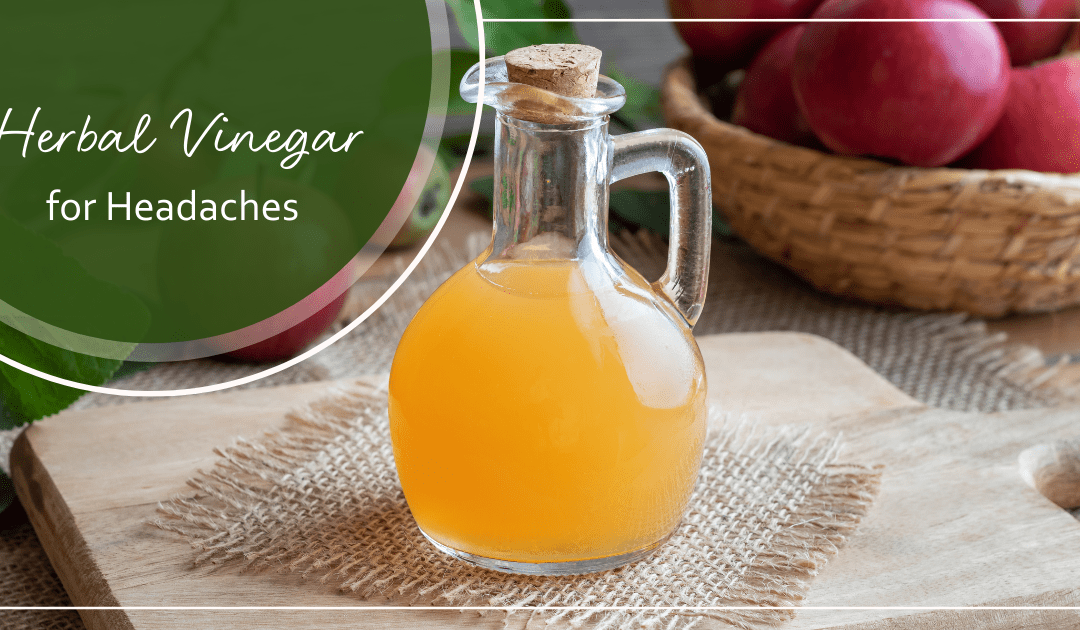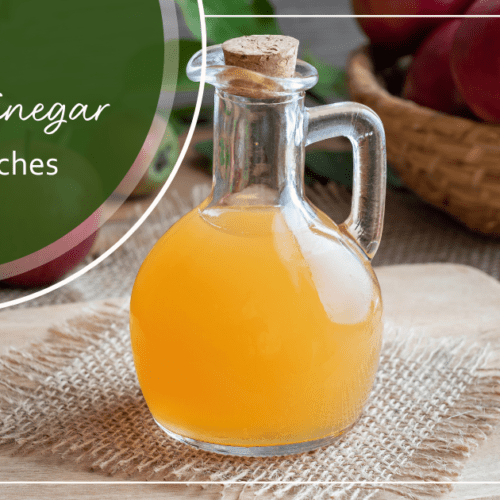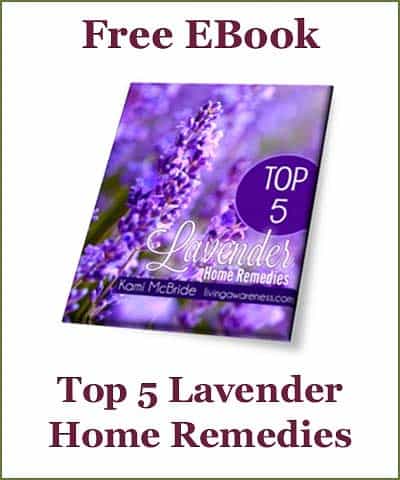Whether you use them to spice up your marinades or soothe your skin, herbal vinegars are great to have around. I keep herb-infused apple cider vinegar in both the pantry and the medicine chest. One easy home remedy to make and have on hand is this apple cider vinegar for headaches.
Here are the ingredients in our herbal headache remedy…
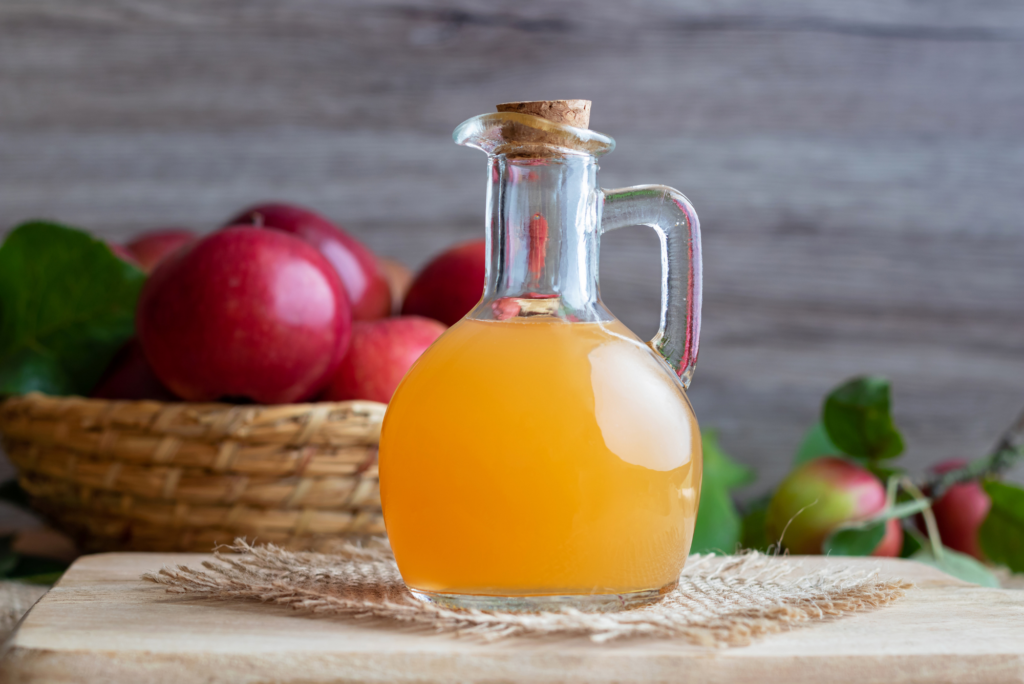
Apple Cider Vinegar
Apple cider vinegar has many benefits, including skin-healing applications. Organic and raw apple cider vinegar is easy to find and is usually less expensive than specialty vinegars.
There are several brands of apple cider-flavored vinegar, which consists of white vinegar with caramel coloring. Many stores carry this imitation apple cider vinegar product, so read the label to ensure you have real apple cider vinegar that is raw and unpasteurized. Vinegar that has not been heated or processes contains healing enzymes and is a much better product than more processed vinegars.
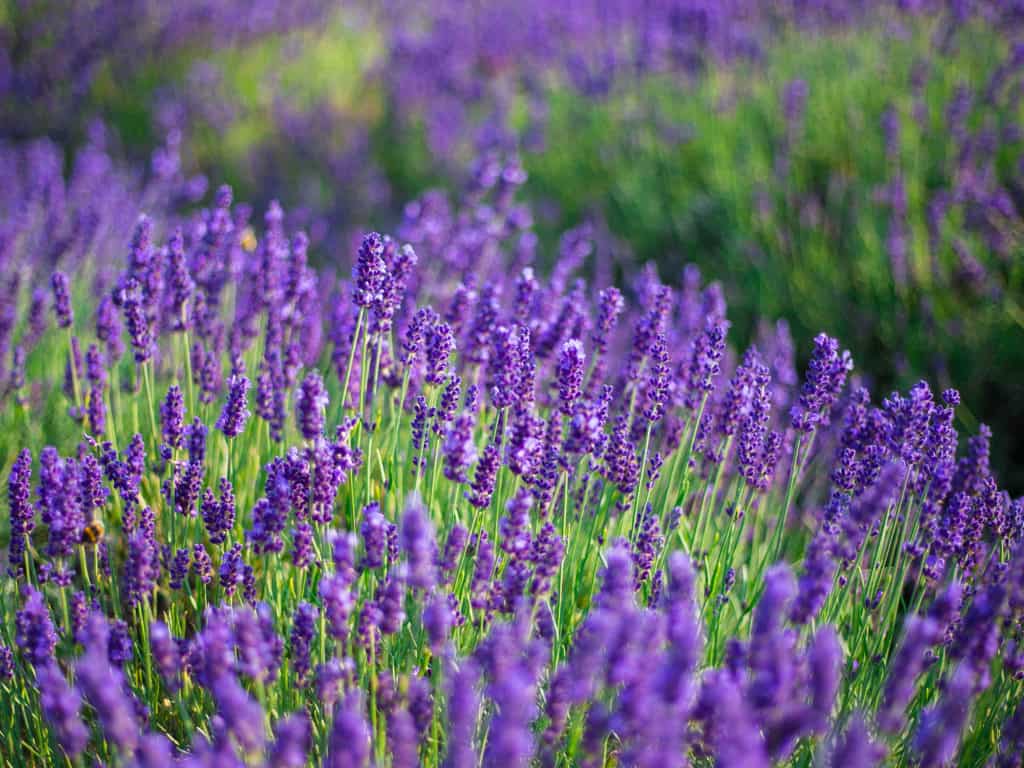
Lavender
Lavender is an antispasmodic herb that helps to calm tense and strained muscles and normalize blood flow to the head. The aroma of lavender relaxes the nervous system and produces a calming and soothing effect on the body.

Peppermint
Peppermint is another antispasmodic herb that relieves muscle tension and headache pain. It also opens the sinuses and clears the head, making it the best herb I have found to counteract the afternoon slump.
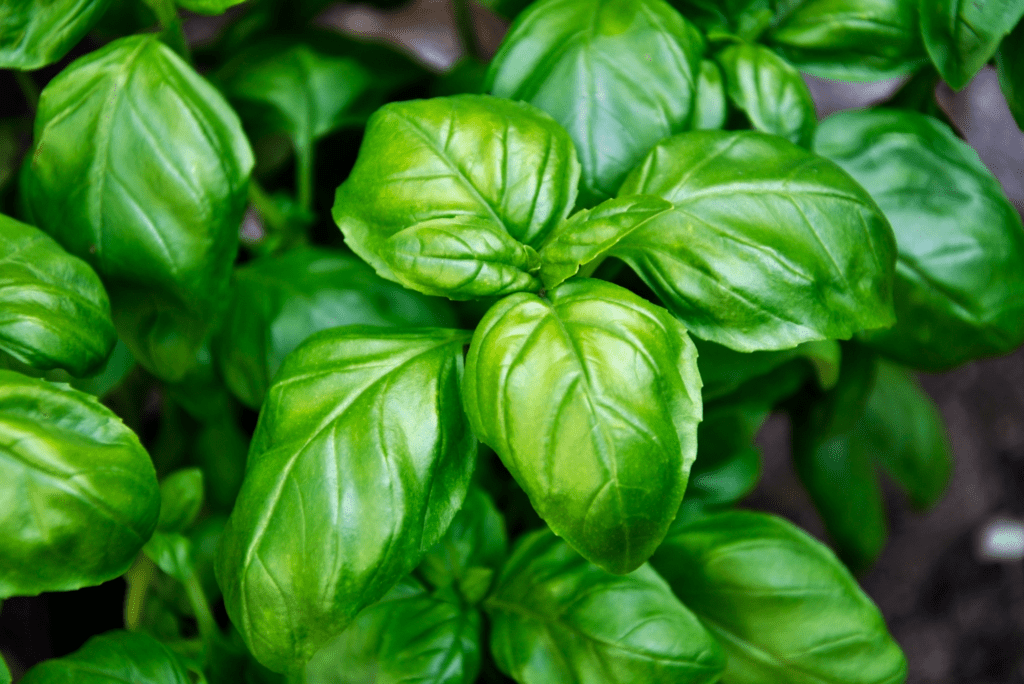
Basil
Among the many health benefits of basil, its warming and aromatic constituents help to relax muscle tension, calm the nervous system, clear the mind, and fight sinus congestion.
How to Use Herbal Apple Cider Vinegar for Headaches
To use this herbal apple cider vinegar for headaches, soak it in a washcloth and apply to the head and feet to calm headaches.
Ready to dive into turning your spice rack into an effective home apothecary? Check out Herbal Kitchen Remedy Solutions
Apple Cider Vinegar for Headaches
Ingredients
- 3/4 cup chopped fresh lavender or 1/4 cup crushed dried lavender
- 3/4 cup chopped fresh peppermint or 1/4 cup crushed dried peppermint
- 3/4 cup chopped fresh basil or 1/4 cup crushed dried basil
- 3 cups apple cider vinegar
Instructions
- Fill a glass jar with herbs.
- Pour vinegar over the herbs, filling the jar to the top with vinegar. Make sure that the vinegar covers the herbs by at least a couple of inches.
- If you are using a metal lid, cover the opening of the jar with two sheets of wax/greaseproof paper, and then put the lid on, or use plastic lids.
- Store the vinegar in a cool, dark place for one month. Shake it once in a while and occasionally check to see if you need to add more vinegar, as some of it may have been soaked up by the plant material. This tends to be more of a problem with fresh herbs than with dried. If the herbs are sticking out above the vinegar, add more vinegar.
- Place a funnel into the opening of a clean, sterilized jar and lay muslin over the top of the funnel.
- Pour the vinegar through the muslin, being careful not to let the contents fall out of the side of the cloth.
- Let all the vinegar strain through the cloth and funnel into the clean jar.
- If your vinegar is made with fresh ingredients, don't squeeze what is in the muslin, or water will squeeze out of the fresh herbs, giving you cloudy vinegar or a shorter shelf life. Just let liquid drip through.
- Discard the strained herbs into the compost. The liquid left behind is your herbal vinegar.
- Store in a clean container in a dark cabinet out of heat, light, and temperature variation. Your vinegar should last for about one year. Make sure you store the vinegar in a container with a plastic or cork lid. The vinegar will eat any metal it comes into contact with. If your vinegar turns black, has floating chunks, or develops mold or a funny smell, throw it away.

I would love to hear from you! Do you have any go-to herbal remedies for headaches? Have you ever made an herb infused apple cider vinegar? Please share in the comments below.

